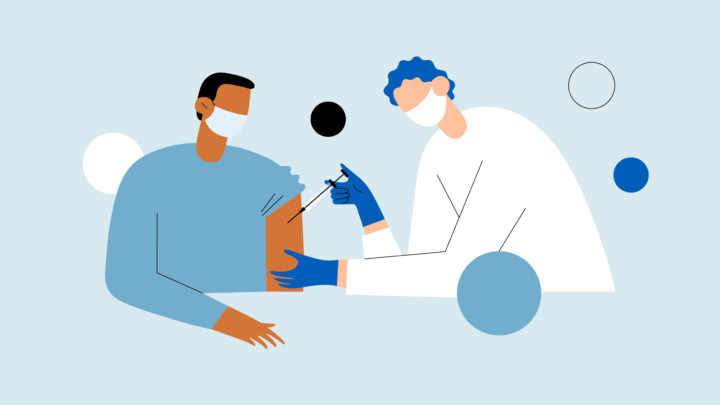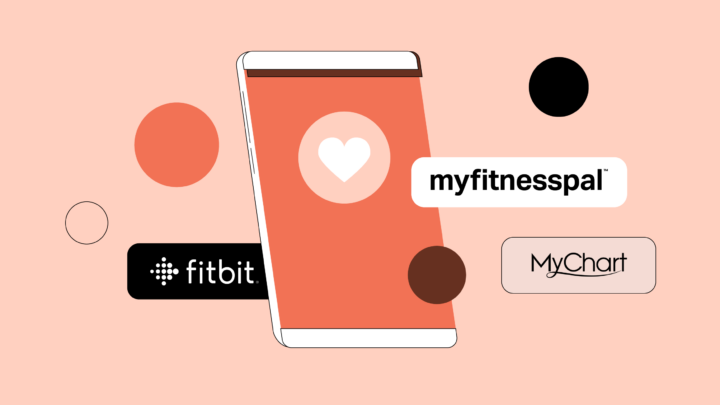
Whether it’s a parent refusing vaccines based on debunked studies or a patient discontinuing prescribed medications after reading alarming social media posts, the challenge of separating fact from fiction has become a daily reality for many healthcare providers. Decades ago, health misinformation was only transferred through word of mouth, but the internet’s introduction has allowed myths to start spreading faster and at a larger scale.
When you understand how misinformation spreads and how to address it, you can establish trust with your patients and provide them with the best possible care.
The growing challenge of medical myths
Some Sermo members that believe myths are creating distrust have suggested a variety of factors are at play. “The pandemic, social media and changes in USA government vaccination policy have contributed to distrust in the medical profession,” writes a pediatrician.
A pediatric neurologist similarly believes that physicians are now contending with a higher degree of skepticism. “Doctors are no longer listened to solely for the authority derived from their profession,” they write. “The treatment journey is co-constructed with the patient, which is why it’s crucial to have their trust. Interaction with them is crucial; our attitude, our listening, and our understanding can be decisive.”
That said, Sermo members are split as to whether medical myths have eroded patient trust in physicians. In a community poll, 25% and 20% of participants said that medical myths have slightly or greatly decreased their trust, respectively. On the other hand, 23% and 20% said they’ve greatly or slightly increased trust. It’s possible that some patients are critical of myths they read online, which makes them appreciate their providers’ educated opinions even more.
How myths affect treatment adherence
A major risk surrounding myths is decreased patient adherence. Sermo data suggests this is a common reality; 42% of respondents in a poll said misinformation has moderately impacted their patients’ adherence to treatment plans, 28% said it’s had a slight effect, and 21% have noticed a significant effect. Myths and information can affect patient outcomes in several ways, including:
- Chronic disease management bears a burden from misinformation. Patients with diabetes may delay insulin therapy based on fear-mongering about pharmaceutical companies. For example, those with hypertension might discontinue medications after reading about “natural alternatives” that lack scientific validation. Others may buy into the common claim that celery juice alone can cure conditions like autoimmune disorders and psoriasis.
- Vaccination rates provide another clear example of misinformation’s impact. Despite overwhelming scientific evidence supporting vaccine safety and efficacy, debunked studies and conspiracy theories continue to influence patient decisions. For example, vaccine hesitation persists due to a myth linking vaccines to autism. In recent years, public health officials have struggled to keep pace with vaccine misinformation online to increase vaccination uptake, according to one study.
- Other forms of preventive care also suffer when patients encounter misleading information. Myths about mammography radiation, colonoscopy risks or blood test accuracy can delay crucial early detection opportunities. For instance, some people may avoid mammograms with the concern that they’ll be exposed to dangerous levels of radiation, when in reality the radiation dose from a standard mammogram is about 0.4 to 0.5 millisieverts, which is roughly equivalent to what a person receives naturally from the environment over two to three weeks. This dose is much lower than other common medical imaging tests and poses minimal risk compared to the significant benefits of early breast cancer detection.
You may find yourself putting more effort into ensuring patient adherence. “If there is an impact on patients, we must be convincing for them to undergo their treatment,” states a general practitioner on Sermo.
Platforms fueling misinformation
Physicians on Sermo cite social media as a major contributor to the spread of health misinformation. In a poll, 60% of members said their patients most commonly bring up myths they found through social media, followed by offline forums and blogs at 16%. “When patients say they did research, it usually means a social media post, not real research,” observes an OBGYN on Sermo.
Platforms like TikTok, Facebook and Instagram have become problematic sources of medical misinformation. They prioritize engagement, allowing compelling but false health claims to achieve viral status. Short-form videos can present complex medical topics in oversimplified ways that ignore important nuances and contraindications.
Even when these companies take measures to decrease misinformation, they’re not necessarily foolproof. For instance, one study found that COVID-19 vaccine-related posts that were factually accurate but deceptive have gone unflagged by Facebook’s factcheckers, and that those unflagged posts likely decreased vaccination rates to a greater extent than flagged posts. Facebook uses third-party fact checkers who review content that’s most likely to be misinformation based on user feedback. They flag the content if it’s inaccurate, and it’s then labeled as containing misinformation and less likely to get shown to users.
The rise of artificial intelligence has provided patients with a new avenue to seek medical information. One OBGYN on Sermo thinks it’s had a positive effect. “I think that overall AI is helping with misinformation,” they write. “I have the feeling that AI recommends visiting the doctor and asking a professional at the lowest risk of medical danger. Other sources are more harmful and create more misinformation.”
A family medicine physician on Sermo isn’t so optimistic. “Even using AI, you need to be careful — references cited may not lead to a real study,” they write. As for patients, danger can arise when they take a chatbot’s advice without consulting their doctor.
Physician strategies for debunking myths
Physicians on Sermo use a variety of strategies to combat misinformation, but straightforward communication is a common thread. In a poll, members shared that they rely on clear simple explanations, provide scientific evidence, point out authoritative sources, or use a combination of these strategies.
One general practitioner reflected on the care they put into establishing patient trust at the outset. “Being clear at the time of the consultation is of utmost importance, clarifying doubts and making them aware of the care of each one,” they write.
A general practice resident provided a similar insight. “Addressing medical myths requires clear, evidence-based information delivered with empathy,” they share.
Effective myth-busting can involve directing patients to trusted, authoritative sources for additional information. “I suggest patients check out trusted sites like government health websites and professional medical organisations,” writes one GP on Sermo. An internal medicine physician suggests “directing patients to Cleveland Clinic, Mayo Clinic publications.”
Different patients may require different communication strategies. Some respond well to statistical evidence and research citations. Others prefer simple visual aids. You can adapt your approach based on your specific patient’s needs and preferences.
Physicians on Sermo have also recommended using analogies to simplify complex science topics and using a calm non-judgemental tone in conversations. Here’s a deeper dive into strategies for combatting misinformation.
Trusted resources physicians recommend
When patients encounter healthcare myths, you can redirect them to reputable sources of medical information. Poll results indicate that Sermo members recommend patient education platforms (28%), professional medical societies (27%), government health websites (18%) and peer-reviewed journals (9%) most frequently.
No matter which resource you choose, the challenge lies in ensuring your patients actually utilize it rather than returning to familiar but unreliable sources. It may require explaining why these sources offer superior information and how to navigate them effectively.
Patient education platforms
Patient education platforms (for example, UpToDate Educate) present complex medical information in accessible formats. These resources typically undergo medical review and regular updates to ensure accuracy. Many platforms also provide materials in multiple languages and reading levels, making them accessible to diverse patient populations.
Professional medical societies
Organizations like the American Medical Association (AMA), American Heart Association (AHA), and specialty-specific societies provide authoritative information backed by extensive research and clinical experience.
Government health websites
Government sites—like the Centers for Disease Control and Prevention (CDC), National Institutes of Health (NIH), and Food and Drug Administration (FDA) in the U.S.—offer evidence-based health information free from commercial bias. These sources provide explanations of complex health topics while maintaining scientific accuracy. Many government sites also address common myths directly, providing ready-made resources for patient education. However, while these resources should be evidence-based and bias-free, the accuracy and independence of their outputs may have been compromised by significant political interference.
Peer-reviewed journals
Peer-reviewed journals, while representing the gold standard for medical evidence, often prove too technical for patient comprehension. Physicians must either translate this information into accessible language or direct patients to sources that have already performed this translation while maintaining accuracy.
Building a myth-resistant practice
Medical misinformation represents one of the most significant challenges facing modern healthcare. Sermo data suggests it has a widespread impact on patient trust and treatment adherence. Yet, Sermo poll data reveals an interesting paradox: while misinformation is widespread, many physicians believe it has actually reinforced patient trust in their expertise.
Doctors on Sermo have shared effective approaches for addressing these challenges. Authority based solely on professional credentials no longer suffices—practitioners now must earn trust through clear, empathetic communication, and redirect patients to trusted resources when appropriate.
With the right strategies, you can build patient trust, making adherence and positive outcomes more likely. In the words of a family medicine physician on Sermo, “addressing misinformation is challenging but well worth the investment.”















